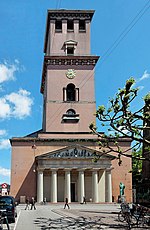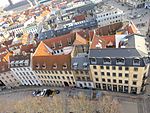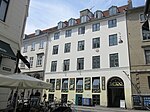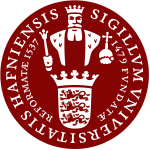Christus (statue)
Christian symbolsMarble sculptures in CopenhagenPlaster sculptures in DenmarkSculptures by Bertel ThorvaldsenSculptures in Copenhagen ... and 2 more
Sculptures of the Thorvaldsen MuseumStatues of Jesus

Christus is an 1833 white Carrara marble statue of the resurrected Jesus Christ by Bertel Thorvaldsen located in the Church of Our Lady (Evangelical Lutheran Church of Denmark) in Copenhagen, Denmark. It was commissioned as part of a larger group, which includes 11 of the original 12 apostles and Paul the Apostle (instead of Judas Iscariot). It has been widely reproduced. Images and replicas of the statue were adopted by the leaders of the Church of Jesus Christ of Latter-day Saints (LDS Church) in the 20th century to emphasize the centrality of Jesus Christ in its teachings.
Excerpt from the Wikipedia article Christus (statue) (License: CC BY-SA 3.0, Authors, Images).Christus (statue)
Frue Plads, Copenhagen Christianshavn
Geographical coordinates (GPS) Address Website Nearby Places Show on map
Geographical coordinates (GPS)
| Latitude | Longitude |
|---|---|
| N 55.679444444444 ° | E 12.573055555556 ° |
Address
Vor Frue Kirke
Frue Plads
1168 Copenhagen, Christianshavn
Capital Region of Denmark, Denmark
Open on Google Maps










